1 - Overview
Safety Overview
Please ensure all team members have read the LiPO guidelines were included with the SMC battery as well as the manual for the Hitec charger.
You can learn more about these products at the links below:
Key Safety Points
- Always charge batteries using the proper settings. Improper charge settings may result in a catastrophic failure of the battery.
- Never charge batteries unattended. If, during a charge, you need to leave for any reason, stop the charge and disconnect the battery from the charger. You can restart charging when you return.
- If a battery ever becomes warm/hot during charge, or starts to swell, it should be removed from the charger and taken outside where it cannot cause damage if it fails. If a battery fails as a result of damage or misuse it may result in fire.
- Never leave a battery connected to your device or charger when not in active use. This may cause a parasitic draw on the battery which may lead it to become over-discharged.
LiPO Battery Voltage Range
- 4.20V per cell represents a fully charged cell.
- 3.00V per cell is the very lowest the battery can go without sustaining damage.
- 3.70V per cell is the “Nominal Voltage” which is the “named” voltage of the cell. This voltage is used as a standard to identify the cell/battery type.
- 3.5-3.7V per cell is the voltage we would recommend landing at.
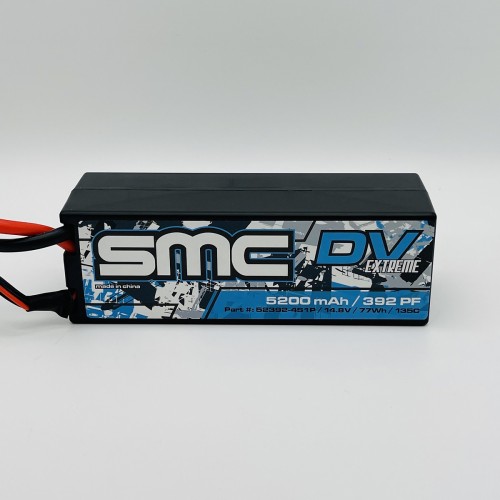
SMC Battery
The battery you will be using is a SMC 14.8V 5200mAh 135C Battery.
Definitions
- Battery: A battery is a device consisting of one or more electrochemical cells with external connections for powering electrical devices.
- mAh: is an abbreviation for milliamp hour and is a unit that measures (electric) power over time. It is commonly used to measure the energy capacity of a battery. In general, the more mAh and the longer the battery capacity or battery “run time.”
- C-Rating: is a shorthand representation of how many amps the cells can supply on a continuous basis without failing.
- Cell Count: How many cells are in series to make the overall voltage of the pack. In this case, 4 cells are in series to make 14.8V nominal, or 16.8V when fully charged. Sometimes referred to as a 4S battery, the “S” refers to “series” to tell us how many cells are comprising the battery pack.
The Charger: Hitec RDX1 Pro
The RDX1 Pro is one of Hitec’s most popular single-channel multi-chemistry battery chargers. It features a 100W Power supply as well as an integrated 6-cell balancer. The RDX1 Pro is capable of charging 1S-6S batteries.
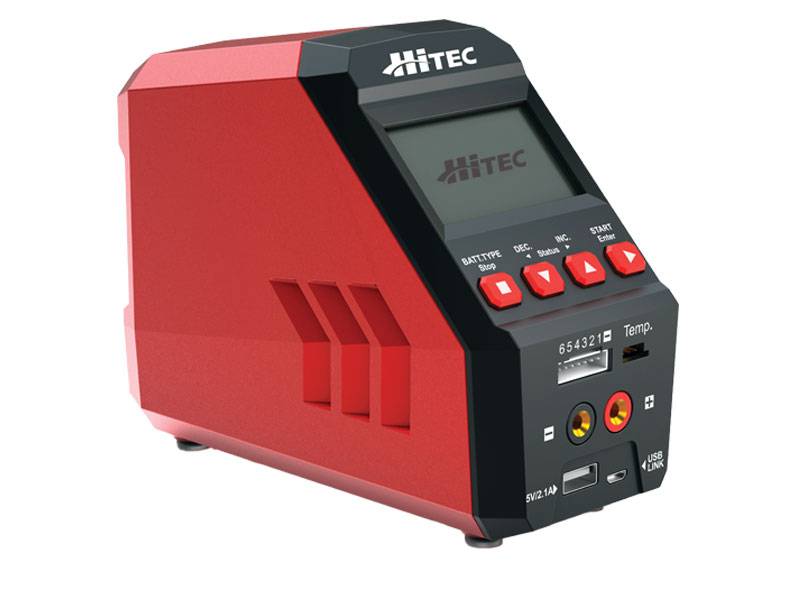
Hitec RDX1 Pro Charger
Battery Storage Bag
Your kit includes a battery storage bag that can be used for storage, transport, and charging.
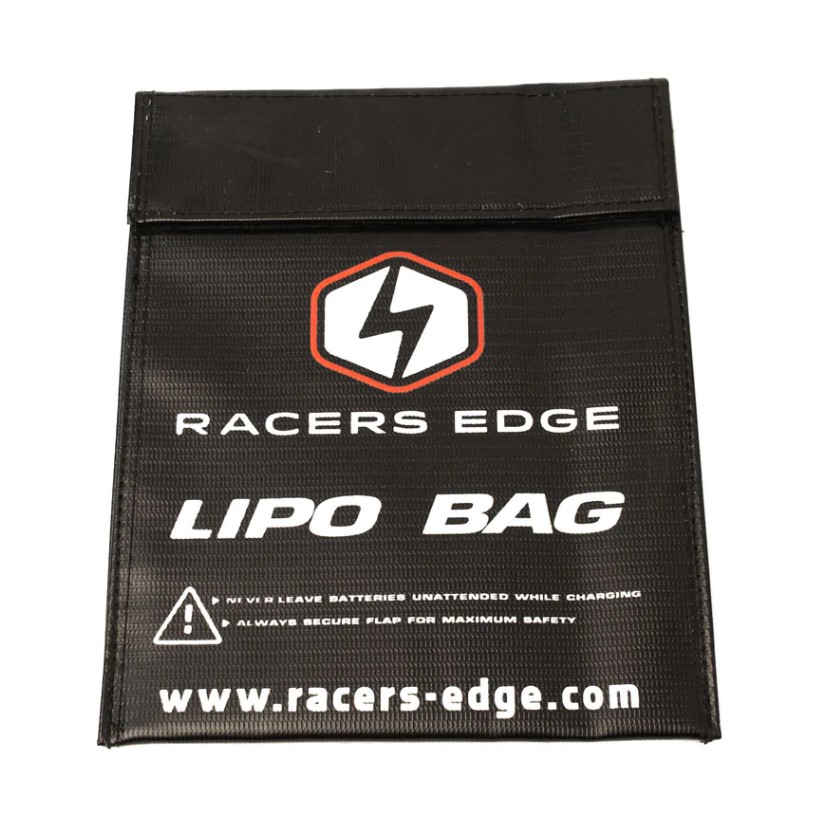
Lipo storage bag
We recommend you use this bag as a charging mat, this will give you an added layer of protection between the battery and the charging surface. Always remember to charge batteries on a non-combustible surface.
What to Do in Case of Fire
If you follow the safety guidelines provided, you should be perfectly safe. However, in the event that something has gone wrong, and there is a battery (LiPo) fire, take the appropriate steps:
Warning
Please read this section, battery fires are serious. Just look up videos of LiPo fires to see for yourself.- First, get yourself and those around you to safety. Drones, computers, etc. are replaceable, while you (and your lungs) are not. Battery fires produce very toxic smoke, and you do NOT want to breathe it in.
- Get help. This depends on your specific situation, but this may be to pull a nearby fire alarm (contrary to popular belief, pulling the alarm does not set off sprinklers), call 911, or call your security department.
After doing the above two steps, and only if you’re comfortable with it and does not pose any danger to you, you can attempt to fight the fire. Your most effective tool is a class D fire extinguisher. These are special fire extinguishers that are meant to put out combustible metals (such as Lithium) and stand out as being bright yellow.
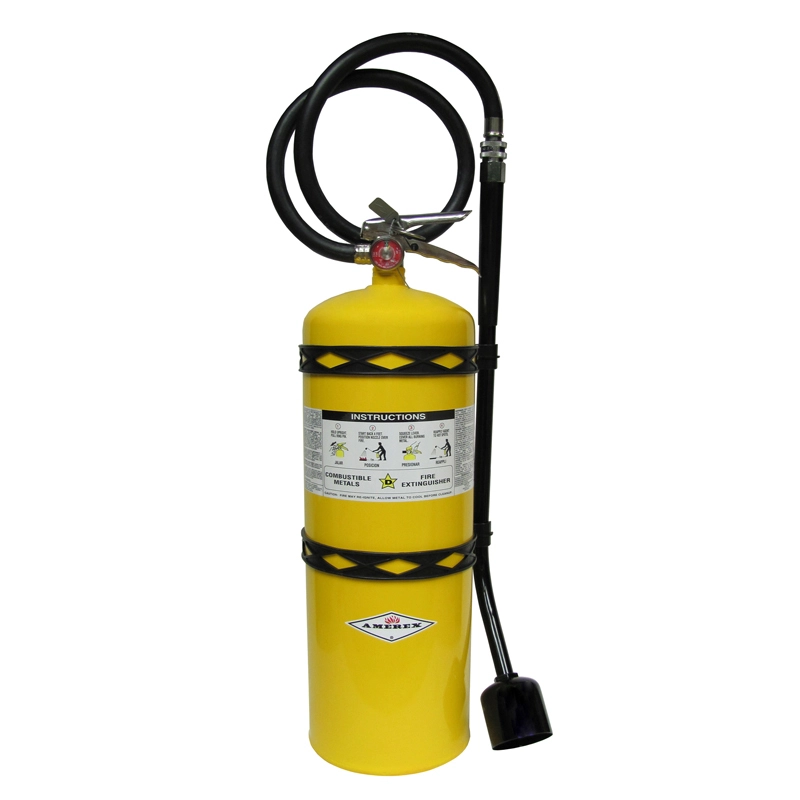
Example class D Copper powder fire extinguisher
However, class D fire extinguishers tend to be uncommon. If a class D fire extinguisher is available, pull the safety pin, aim the nozzle, and squeeze the handle. These tend to be quite heavy, so you may need an additional person to assist.
If a class D fire extinguisher is not available, your next best bet is to throw a fire blanket over the fire to smother it as much as possible. This won’t put it out but it will supress the flames. Most labs have a fire blanket.

Example fire blanket
Finally, as a last resort, pour sand or dirt on the fire. This is generally what we have on hand at competition events for safety and acts similarly to a fire blanket.
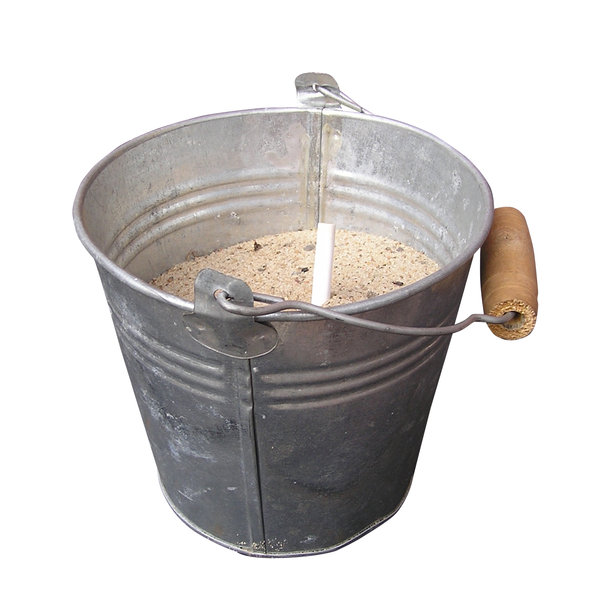
Low-tech solutions can be effective
A normal, red, class ABC fire extinguisher does very little to put out a battery fire. Don’t waste your time unless you have absolutely nothing else to smother the flames with.
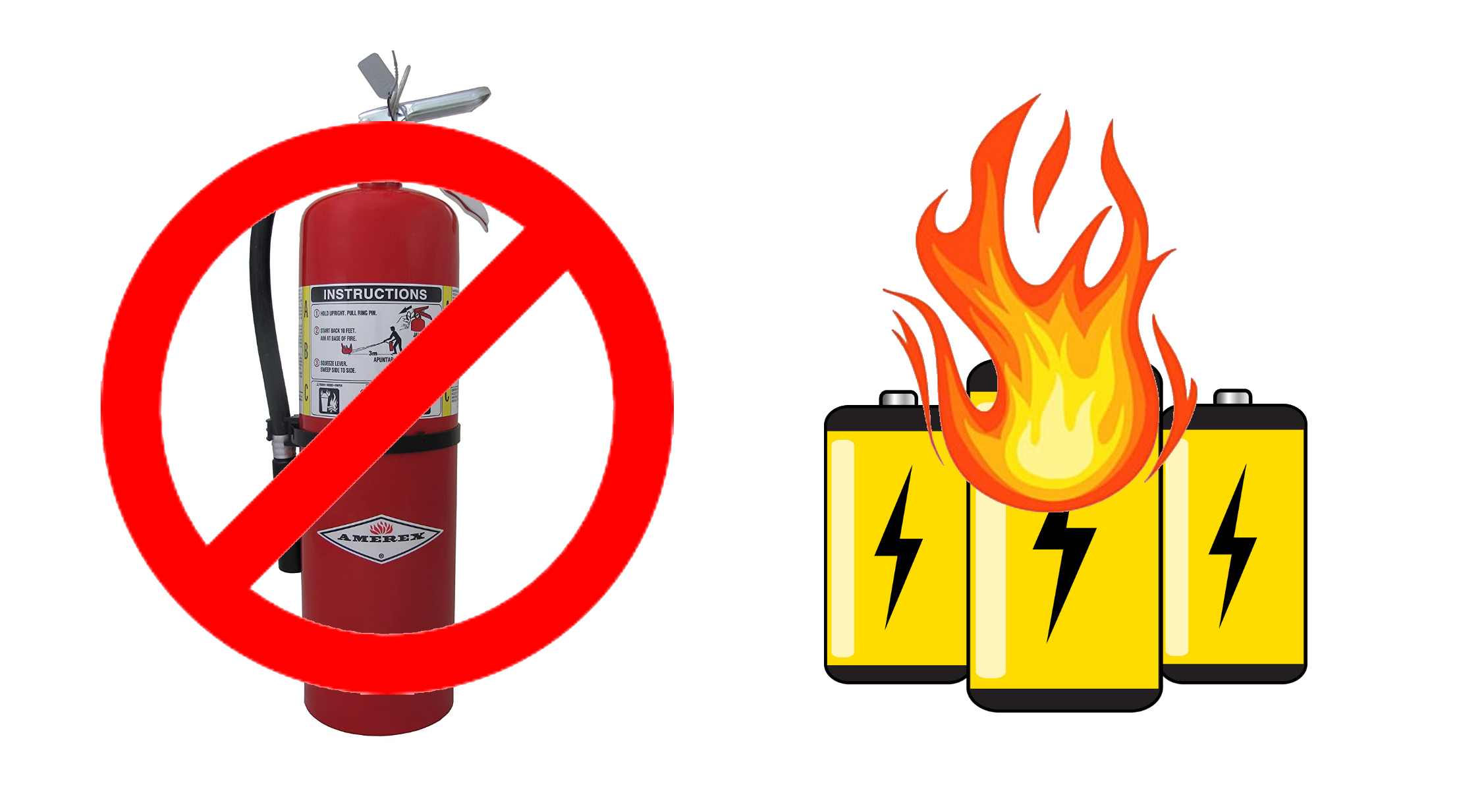
A class ABC fire extinguisher is not effective for a battery fire
2 - Charging
Charging the Battery
Please read the manual prior to beginning your first charge. The manual comes with your charger or you can find a digital version here.
Please watch the video below to understand the recommended LiPo charging process.
Warning
The balance connector should always be used whenever the battery is being used with the charger.Note
While the battery has a capacity of 5200mAh, you will likely not put 5200mAh into the battery on charging. We can only put in what we have taken out. A LiPO battery cannot be run down to 0.0V per cell, it cannot go lower than 3.0V per cell without being damaged.3 - Storage
Battery Storage
After using the battery, give it approximately 30 minutes to cool down.
Determine when the battery will be used going forward. If the battery will be used again within 24 hours, proceed to fully charge the battery. The goal is to minimize the time lithium batteries sit fully charged. Long periods of maintaining full charge will dramatically reduce the lifespan of the battery pack, and can lead to swelling/premature failure.
If the battery will not be used in the next 24-48 hours, please proceed with a storage cycle, as demonstrated in the video below.
Note
Storage charging may take hours to perform properly based on the starting voltage of the pack. A storage cycle should never be conducted without direct supervision. In cases where the time for a proper storage cycle cannot be committed, leave the battery in a discharged state rather than taking a chance and leaving it unattended while on the storage cycle.The storage voltage range is typically between 3.70-3.85V per cell. However, lower voltages, down to 3.4V per cell are unlikely to cause issues, especially over shorter time periods. If the battery will be in storage for more than a week, it’s best to perform a proper storage cycle as time permits.